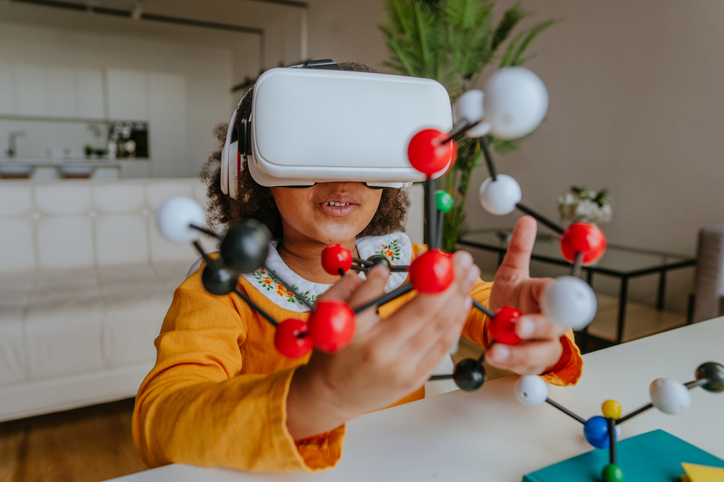Virtual Reality (VR) and Augmented Reality (AR) are great educational resources, but they are not precisely the same.
Historically, technology has been one of the fundamental tools to advance education and improve learning, especially during the last two years in which it played a critical role in enabling distance education. In previous articles, we discussed the two topics, Augmented Reality (AR) and Virtual Reality (VR), and their applications in education.
In 2021, we presented Professor Mariela Urzua Reyes in a previous edition of our webinars. She accompanied us to explain the applications of augmented reality in chemistry teaching. This year, she returns for the webinar entitled “Applying Virtual Reality in Your Chemistry Classes Simply,” which will be held this Tuesday, June 21, at 12:00 hours (Mexico City time).
In this new edition, the teacher will comment on another project of her authorship, but with a different technology: virtual reality. What is the difference between this and augmented reality? We explain the distinctions below to understand better what will be discussed in this broadcast.
Augmented Reality Vs. Virtual Reality
While both terms refer to incorporating technological elements into the human experience, their implications are very different. Augmented reality uses devices to add digital aspects and objects to a physical environment, such as in the game Pokemon Go.
Virtual reality (VR), on the other hand, generates an immersive experience through wearable devices, such as virtual reality visors or headsets. VR creates a simulated environment in which the user enters and perceives himself in a world that seems like reality. Simply stated, augmented reality starts from the real world and layers digital elements onto it, while virtual reality immerses the user and creates a reality from scratch. Both approaches can bring significant benefits to the educational effort.
Didactic technologies and Chemistry
The previous work of Professor Mariela in educational technologies involved an augmented reality project for teaching chemistry with very positive results for the students. In collaboration with her son, Jesús Alejandro Gómez, 15, she developed an app so that her students could visualize the carbon hybridization process, where hybrid orbitals take shape, and how simple double and triple hydrocarbons bonds hydrocarbons form. According to the teacher, 95% of the students reported that the app helped them improve their learning and profundity of understanding.
“Chemistry is not so popular [among students]; very few are interested in it given the complexity of the basic concepts to understand the structure of matter. However, augmented reality can motivate students to learn more about this subject and enter unknown worlds.” The teacher commented on the benefits of technology to facilitate education in an Edu bits article about her project. With what she learned in this collaboration, she took another step toward virtual reality and will share her knowledge in this next webinar. Don’t miss it!
The webinar will be in Spanish, but if you are English-speaking, we invite you to consult the English version of several of the linked articles and our Edu Trends report on Virtual Reality and Augmented Reality.
Translation by Daniel Wetta
This article from Observatory of the Institute for the Future of Education may be shared under the terms of the license CC BY-NC-SA 4.0 
)
)


)